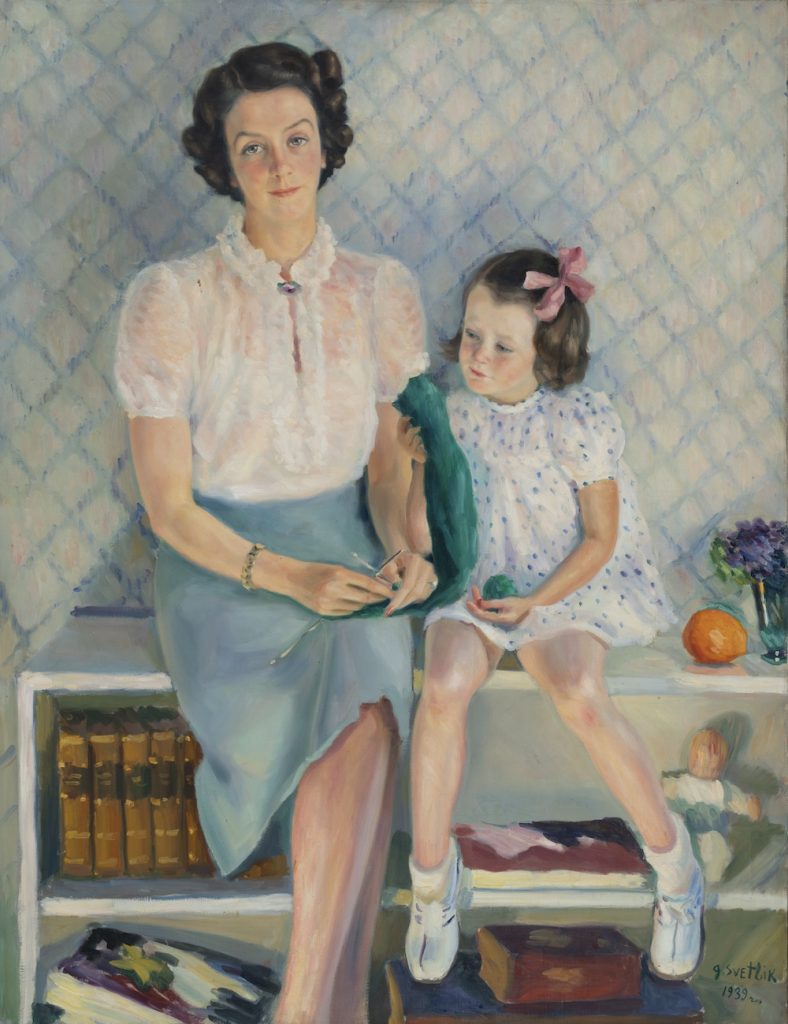Georges von Swetlik, Greta Hornborg and her daughter Elisabeth, 1939
JANUARY 2021
St. Petersburg born artist and an immigrant to Finland, Georges von Swetlik (1912–1991) belonged to those artists whom Gösta Serlachius guided and supported financially. So, Gösta Serlachius commissioned several portraits of him. One of them is a double portrait of Serlachius’ daughter Greta Hornborg and her daughter Elisabeth from the year 1939. The Fine Arts Foundation’ acquired it recently for its collection.
Serlachius who had seen one portrait painted by young Swetlik and was attracted by it, consequently invited the artist in summer 1932 to visit Mänttä to paint the portraits of him and his wife. Swetlik was only 19 years of age at that time. ”Likeness to the model is an obvious obligation in art where portraiture is concerned” said the young artist who already had studied and copied portraits of old European masters.
In short, it was not easy. Serlachius wrote to Swetlik in March 1934 that the portraits he had painted had been assessed critically. They were esteemed promising, but many things were yet to be learned. “As indicative of how strict the members of the board of trustees of the newly established Fine Arts Foundation are, I would like to mention that two previously completed portraits of mine were destroyed, and instead of being accepted for the collection, the portrait painted by Järnefelt will be destroyed as well”, warned Serlachius.
Serlachius financed Swetlik’s studies at Académie Colarossi in Paris. As a result, the artist promised to repay in paintings, as the first of which he painted the portrait of Miss Europe Ester Toivonen autumn 1934. “Unfortunately, it is one of my worst work, merely an empty glittering image, stated Swetlik. The second painting in barter was the altar piece for Tervakoski church. However, that did not please the artist either. It was difficult to paint on commission. “I should never have painted any altar piece or suggest anything else for Serlachius. It is strange that I always failed with paintings I made for him.”
Gösta and Ruth travelled to Paris to visit Swetlik. Serlachius used the opportunity to visit the Louvre for the first time. “He usually had so many business meetings, dinner parties and so on so that he never could schedule time for his great interest, paintings”, described Swetlik. This time he consequently took some days off and spend all his time in Paris – almost a week – on art and museums. “He was completely captivated by the Louvre and did not want to leave from there at all. It was me who took Gösta Serlachius to the Louvre”, recalled Swetlik expressing deserved pride in his text.
In 1970s, Swetlik wrote about his cooperation with Serlachius. He did not appreciate the three works which belong to the Fine Arts Foundation’s collection from his oeuvre: A Nude Sitting on the Edge of a Bed (1932), A Woodland Pool (1933) and as third, Self-Portrait (1933), which he did not recall at all. “They are the worst that I have made at that time and I cannot understand now how I could have left something like that behind me.
In 2020, Gösta Serlachius Fine Arts Foundation acquired for its collection Swetlik’s work, a double portrait of Greta Hornborg and her daughter Elisabeth. Swetlik painted the portrait in May 1939. “ I have a sunny recollection of this last May before the war and of this very nice family. He regarded this particular painting as successful.
Helena Hänninen
Curator
Source:
A letter by Georges von Swetlik from the year 1977. SM


